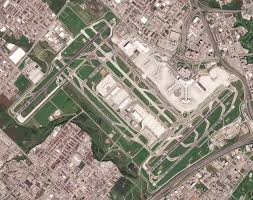Pearson Airport: Gateway to the World

Introduction
Toronto Pearson International Airport, commonly known as Pearson Airport, is Canada’s busiest airport, serving as a vital hub for international travel and commerce. With over 50 million passengers passing through annually, its role in the Canadian economy and connectivity to the global community cannot be overstated. Recent developments and enhancements at the airport are likely to further cement its status as a leading airport in North America.
Recent Developments
In recent months, Pearson Airport has made headlines for its ongoing improvements aimed at enhancing passenger experience and operational efficiency. A significant upgrade worth CAD 1.2 billion is currently being executed to modernize Terminal 1, which includes new check-in areas, improved technology for baggage handling, and expanded retail options. The renovations are expected to be completed by 2025, aligning with projected increases in passenger volumes as air travel rebounds from pandemic lows.
New Airlines and Routes
Additionally, Pearson Airport has welcomed new airlines and routes that diversify its offerings and improve global connectivity. In 2023, several low-cost carriers began regular flights from Pearson, making air travel more accessible. Notable expansions include new nonstop routes to Asia, Europe, and South America, which are anticipated to stimulate tourism and business travel in the region.
Challenges and Future Outlook
Despite its significance, Pearson Airport has faced challenges, particularly during peak travel seasons, when congestion has led to long wait times and operational delays. The airport authority is actively working on strategies to mitigate these issues, including the implementation of advanced technology for crowd management and enhanced staffing measures.
Looking ahead, the future of Pearson Airport is bright. Experts anticipate a steady increase in traveler numbers as global travel restrictions continue to ease. Moreover, ongoing investments in infrastructure and technology will likely enable Pearson to maintain its position as a premier airport. Initiatives focused on sustainability are also in the works, aiming to reduce the environmental impact of airport operations.
Conclusion
Toronto Pearson International Airport remains a crucial asset for Canada, shaping the travel landscape while helping to connect the country to the world. As it adapts to the evolving needs of travelers and tackles challenges head-on, Pearson Airport’s potential for growth and innovation represents a promising outlook for travelers and the economy alike.


